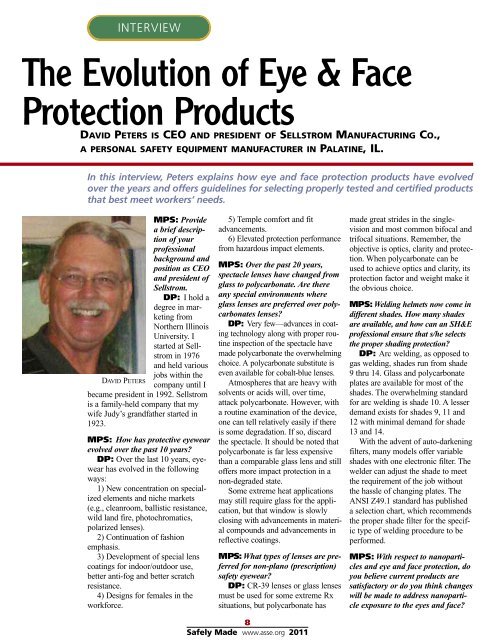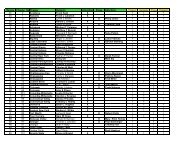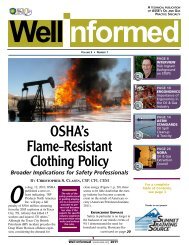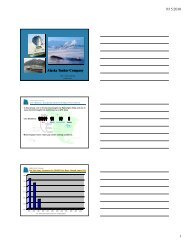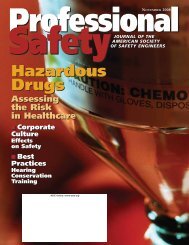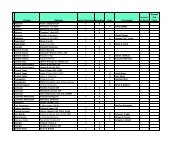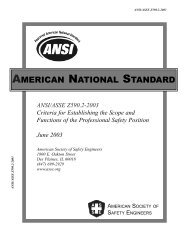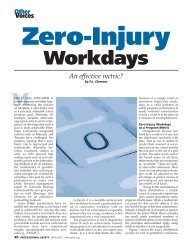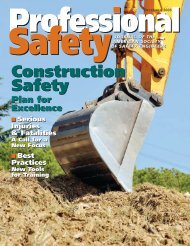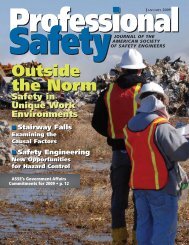Safety & Health Effects of Shift Work - ASSE Members
Safety & Health Effects of Shift Work - ASSE Members
Safety & Health Effects of Shift Work - ASSE Members
Create successful ePaper yourself
Turn your PDF publications into a flip-book with our unique Google optimized e-Paper software.
INTERVIEW<br />
The Evolution <strong>of</strong> Eye & Face<br />
Protection Products<br />
DAVID PETERS IS CEO AND PRESIDENT OF SELLSTROM MANUFACTURING CO.,<br />
A PERSONAL SAFETY EQUIPMENT MANUFACTURER IN PALATINE, IL.<br />
In this interview, Peters explains how eye and face protection products have evolved<br />
over the years and <strong>of</strong>fers guidelines for selecting properly tested and certified products<br />
that best meet workers’ needs.<br />
MPS: Provide<br />
a brief description<br />
<strong>of</strong> your<br />
pr<strong>of</strong>essional<br />
background and<br />
position as CEO<br />
and president <strong>of</strong><br />
Sellstrom.<br />
DP: I hold a<br />
degree in marketing<br />
from<br />
Northern Illinois<br />
University. I<br />
started at Sellstrom<br />
in 1976<br />
and held various<br />
jobs within the<br />
DAVID PETERS<br />
company until I<br />
became president in 1992. Sellstrom<br />
is a family-held company that my<br />
wife Judy’s grandfather started in<br />
1923.<br />
MPS: How has protective eyewear<br />
evolved over the past 10 years<br />
DP: Over the last 10 years, eyewear<br />
has evolved in the following<br />
ways:<br />
1) New concentration on specialized<br />
elements and niche markets<br />
(e.g., cleanroom, ballistic resistance,<br />
wild land fire, photochromatics,<br />
polarized lenses).<br />
2) Continuation <strong>of</strong> fashion<br />
emphasis.<br />
3) Development <strong>of</strong> special lens<br />
coatings for indoor/outdoor use,<br />
better anti-fog and better scratch<br />
resistance.<br />
4) Designs for females in the<br />
workforce.<br />
5) Temple comfort and fit<br />
advancements.<br />
6) Elevated protection performance<br />
from hazardous impact elements.<br />
MPS: Over the past 20 years,<br />
spectacle lenses have changed from<br />
glass to polycarbonate. Are there<br />
any special environments where<br />
glass lenses are preferred over polycarbonates<br />
lenses<br />
DP: Very few—advances in coating<br />
technology along with proper routine<br />
inspection <strong>of</strong> the spectacle have<br />
made polycarbonate the overwhelming<br />
choice. A polycarbonate substitute is<br />
even available for cobalt-blue lenses.<br />
Atmospheres that are heavy with<br />
solvents or acids will, over time,<br />
attack polycarbonate. However, with<br />
a routine examination <strong>of</strong> the device,<br />
one can tell relatively easily if there<br />
is some degradation. If so, discard<br />
the spectacle. It should be noted that<br />
polycarbonate is far less expensive<br />
than a comparable glass lens and still<br />
<strong>of</strong>fers more impact protection in a<br />
non-degraded state.<br />
Some extreme heat applications<br />
may still require glass for the application,<br />
but that window is slowly<br />
closing with advancements in material<br />
compounds and advancements in<br />
reflective coatings.<br />
MPS: What types <strong>of</strong> lenses are preferred<br />
for non-plano (prescription)<br />
safety eyewear<br />
DP: CR-39 lenses or glass lenses<br />
must be used for some extreme Rx<br />
situations, but polycarbonate has<br />
made great strides in the singlevision<br />
and most common bifocal and<br />
trifocal situations. Remember, the<br />
objective is optics, clarity and protection.<br />
When polycarbonate can be<br />
used to achieve optics and clarity, its<br />
protection factor and weight make it<br />
the obvious choice.<br />
MPS: Welding helmets now come in<br />
different shades. How many shades<br />
are available, and how can an SH&E<br />
pr<strong>of</strong>essional ensure that s/he selects<br />
the proper shading protection<br />
DP: Arc welding, as opposed to<br />
gas welding, shades run from shade<br />
9 thru 14. Glass and polycarbonate<br />
plates are available for most <strong>of</strong> the<br />
shades. The overwhelming standard<br />
for arc welding is shade 10. A lesser<br />
demand exists for shades 9, 11 and<br />
12 with minimal demand for shade<br />
13 and 14.<br />
With the advent <strong>of</strong> auto-darkening<br />
filters, many models <strong>of</strong>fer variable<br />
shades with one electronic filter. The<br />
welder can adjust the shade to meet<br />
the requirement <strong>of</strong> the job without<br />
the hassle <strong>of</strong> changing plates. The<br />
ANSI Z49.1 standard has published<br />
a selection chart, which recommends<br />
the proper shade filter for the specific<br />
type <strong>of</strong> welding procedure to be<br />
performed.<br />
MPS: With respect to nanoparticles<br />
and eye and face protection, do<br />
you believe current products are<br />
satisfactory or do you think changes<br />
will be made to address nanoparticle<br />
exposure to the eyes and face<br />
8<br />
Safely Made www.asse.org 2011


